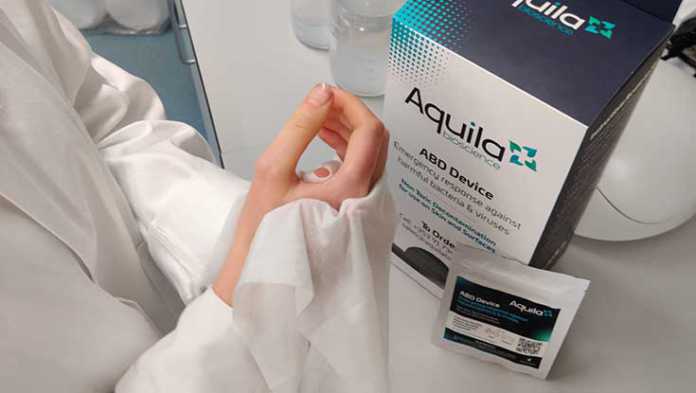A novel type of decontamination wipe developed by a Galway company removes 99.99% of coronavirus from human skin a new study claims.
Aquila Bioscience, an NUIG medtech spinout company based at the university, has created a new type of decontamination wipe that can trap biological agents, including viruses, without the use of chemicals.
Their novel technology acts as a kind of velcro acting at the nanoscale, and the most recent study of its effectiveness has shown that it can remove pathogens from skin and other surfaces, including coronavirus.
Lokesh Joshi, Founder of Aquila Bioscience, said that this wipe is a “game changer” in the future of pathogen and infection control.
He boasted that it will “pave the way for safer methods of decontamination that do not cause harm to humans or the natural world.”
The study was carried out by an independent laboratory in France with expertise in Virology using donor human skin from cosmetic surgeries.
When applied to the skin surface, the laboratory found that the ABD device removes pathogens from affected surfaces by binding to the pathogens with molecular hooks.
The development of this technology was funded by the European Defence Agency and was conducted in collaboration with the Irish Defence Forces and the Czech University of Defence.
The goal was to create a wipe or mask that could successfully decontaminate multiple different biological threats, including viruses.
Because they do not rely on chemical agents that are harmful to skin, they can also be used on sensitive areas such as eyes, nose and mouth without fear.
Since the onset of the coronavirus pandemic, Aquila have become an approved supplier of PPE to schools for their wipes.
“Currently we are very much focused on supplying this technology to the Irish markets,” Prof Joshi said.
“We are also interested in working with other international partners on how best to bring this technology to other global markets.”











